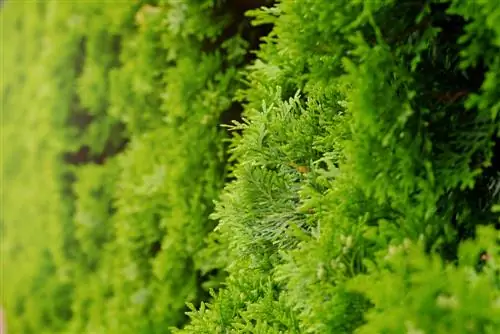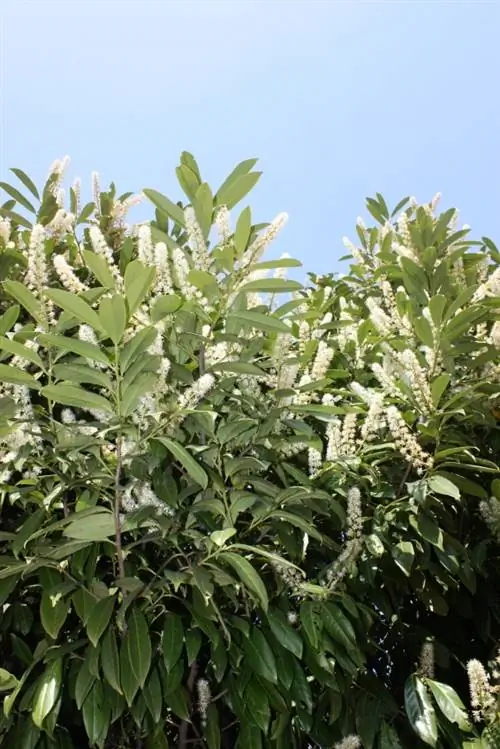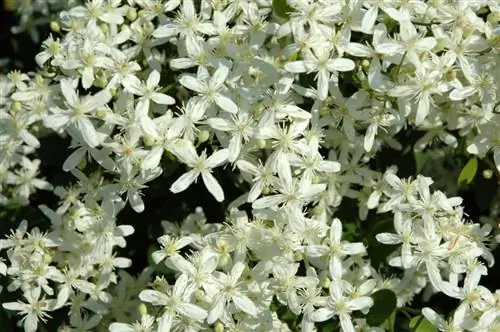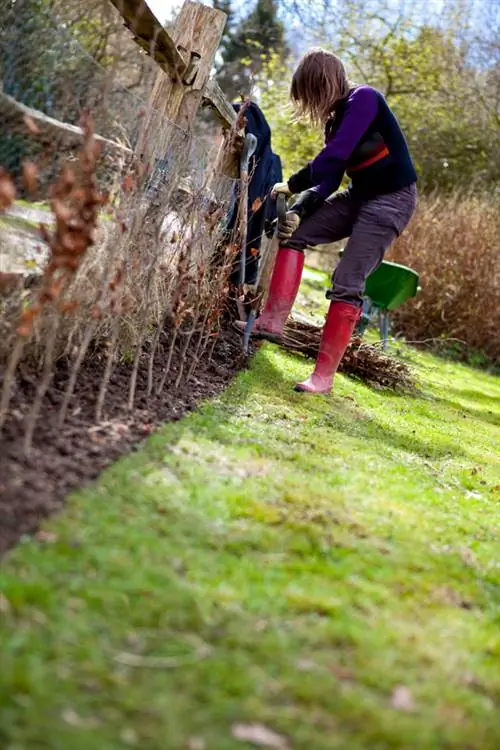- Author admin [email protected].
- Public 2023-12-16 16:46.
- Last modified 2025-01-23 11:21.
A hedge made of coniferous trees serves several purposes in the garden: it serves as a boundary to the property, as protection from prying eyes, noise and wind, but also to structure the garden space. The latter can be an interesting and simple form of garden design, especially in larger gardens.

Which conifers are suitable for hedges?
The best conifer species for hedge planting include the western arborvitae (Thuja occidentalis), the European yew (Taxus baccata) and Lawson's false cypress (Chamaecyparis lawsoniana). These species are fast-growing, robust and cut-resistant.
The best types for hedge planting
Not every conifer is suitable for planting as a hedge. Give preference to species that are fast-growing, robust and cut-resistant. Spruce trees are sometimes recommended for a hedge, but this is strongly discouraged. These conifers tolerate regular, heavy pruning poorly and often do not sprout again. However, the following types have proven successful.
Occidental tree of life (Thuja occidentalis)
In the case of Thuja, the variety of varieties is considerable: tall varieties can be used wonderfully for high hedges and as privacy and wind protection, dwarf forms for lower hedges (e.g. to frame a perennial bed or a grave). The varieties 'Brabant' and 'Smaragd' are very popular for hedges. Thuja is very tolerant of pruning and can cope with severe pruning very well. Plant the hedge in a sunny to partially shaded location with fresh to moist, humus-rich soil. This can be slightly acidic to alkaline.
European Yew (Taxus baccata)
The European yew has been cultivated in our gardens since ancient times and is considered to be very long-lasting, adaptable and robust. As a solitary plant, it often has multiple stems from the base and can grow up to 15 meters high. As a hedge, the yew is considered to tolerate pruning well and is a popular topiary. In contrast to many other conifers, the yew thrives well in the shade and is also undemanding when it comes to soil. This can be slightly acidic to alkaline, sandy to loamy-humic, but must not have a tendency to waterlogging.
Lawson's Cypress (Chamaecyparis lawsoniana)
This interesting tree has fan-shaped or feather-shaped branches with scale-shaped leaves that overlap like roof tiles. They are dark to gray-green, in some varieties also steel blue or yellow. The species, which tolerates cutting very well, should be planted in a sunny to semi-shady location, but it does not tolerate heat or drought. The soil can be slightly acidic to alkaline, sandy or loamy.
Tip
The Leyland cypress (Cupressocyparis leylandii), some types and varieties of juniper (Juniperus) and some pine species (Pinus) are also well suited for hedge planting.






